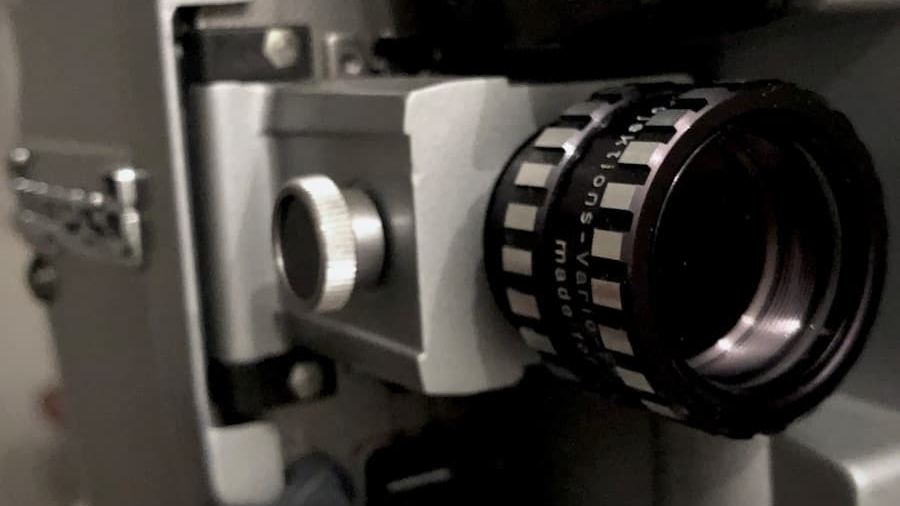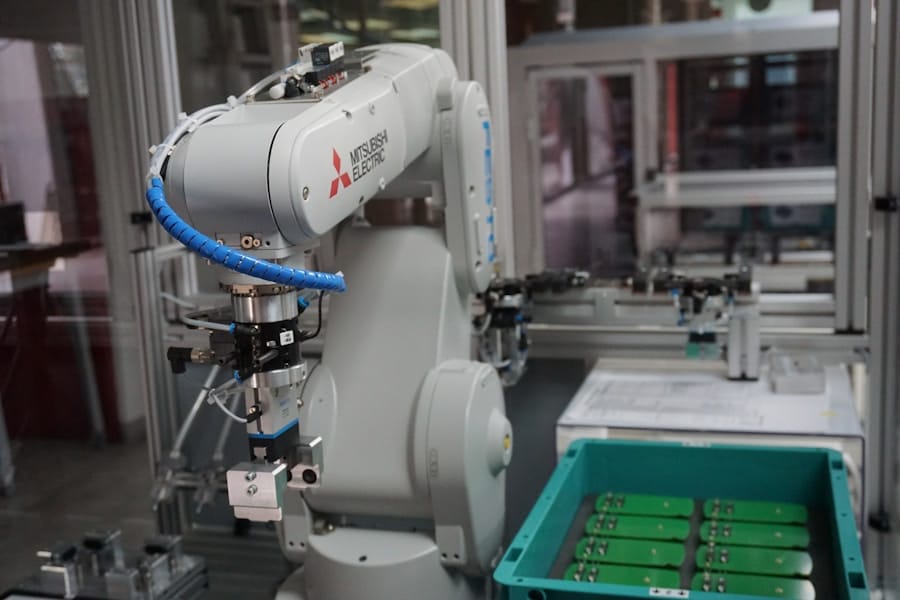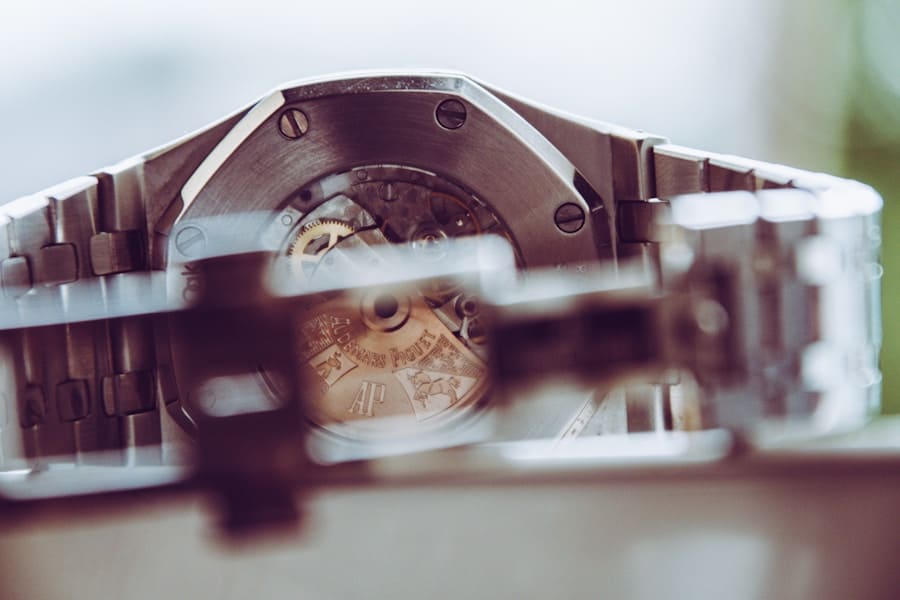Machine vision has emerged as a transformative technology in the realm of quality control, revolutionizing how manufacturers ensure product integrity and compliance with industry standards. At its core, machine vision refers to the use of computer algorithms and imaging systems to enable machines to interpret and understand visual information from the world around them. This technology leverages cameras, sensors, and sophisticated software to analyze images and make decisions based on visual data.
In manufacturing, machine vision systems are employed to inspect products, monitor processes, and facilitate automation, thereby enhancing efficiency and accuracy in quality control. The integration of machine vision into quality control processes is driven by the need for precision and reliability in production environments. Traditional quality control methods often rely on human inspectors, which can introduce variability and subjectivity into the evaluation process.
In contrast, machine vision systems provide consistent and objective assessments, capable of detecting defects that may be imperceptible to the human eye. As industries increasingly adopt automation and smart manufacturing practices, machine vision stands out as a critical component in achieving high-quality standards while minimizing waste and reducing operational costs.
Key Takeaways
- Machine vision is a technology that uses cameras and image processing to perform quality control in manufacturing.
- Using machine vision in quality control can lead to improved product quality, increased efficiency, and reduced costs.
- Key components of machine vision systems include cameras, lighting, image processing software, and communication interfaces.
- Common applications of machine vision in quality control include defect detection, measurement, alignment, and barcode reading.
- Challenges and limitations of machine vision in quality control include complex inspection tasks, environmental factors, and high initial costs.
Benefits of Using Machine Vision in Manufacturing Quality Control
Enhanced Inspection Speed and Accuracy
Machine vision systems can process images at remarkable speeds, allowing for real-time inspection of products on production lines. This rapid analysis not only accelerates the quality control process but also enables manufacturers to identify defects immediately, reducing the likelihood of faulty products reaching customers.
Reduced Labor Costs and Optimized Workforce Efficiency
By automating quality control processes through machine vision, manufacturers can reallocate human resources to more complex tasks that require critical thinking and problem-solving skills. This shift not only optimizes workforce efficiency but also minimizes the risk of human error, which can lead to costly recalls or rework.
Consistency and Reliability
Machine vision systems can operate continuously without fatigue, providing a level of consistency that is difficult to achieve with human inspectors. This consistency is particularly crucial in industries such as automotive, where machine vision can inspect thousands of components per minute, ensuring that every part meets stringent safety and performance standards.
Key Components of Machine Vision Systems
A typical machine vision system comprises several essential components that work together to capture and analyze visual data. The first component is the imaging device, which is usually a camera equipped with high-resolution sensors capable of capturing detailed images of the objects being inspected. Depending on the application, different types of cameras may be used, including monochrome, color, or infrared cameras.
The choice of camera is critical as it directly impacts the quality of the images captured and, consequently, the accuracy of the inspection process. In addition to cameras, machine vision systems also include lighting solutions designed to illuminate the objects being inspected optimally. Proper lighting is crucial for enhancing image contrast and clarity, enabling the system to detect subtle defects or variations in surface texture.
Various lighting techniques, such as backlighting, diffuse lighting, or structured light, can be employed depending on the specific requirements of the inspection task. Furthermore, image processing software plays a vital role in analyzing the captured images. This software utilizes algorithms to identify patterns, measure dimensions, and detect anomalies, transforming raw visual data into actionable insights for quality control.
Common Applications of Machine Vision in Quality Control
Machine vision finds applications across a wide array of industries, each leveraging its capabilities to enhance quality control processes. In the electronics sector, for example, machine vision systems are employed to inspect printed circuit boards (PCBs) for defects such as solder joint issues or component misalignment. The ability to detect these defects at an early stage is crucial for ensuring the reliability and performance of electronic devices.
By implementing machine vision in PCB inspection, manufacturers can significantly reduce failure rates and improve overall product quality. In the food and beverage industry, machine vision is utilized for packaging inspection to ensure compliance with labeling regulations and quality standards. Systems can verify that labels are correctly applied, check for fill levels in containers, and even assess product appearance for freshness or spoilage indicators.
This application not only helps maintain brand integrity but also ensures consumer safety by preventing mislabeled or contaminated products from reaching the market. The versatility of machine vision allows it to adapt to various inspection tasks across different sectors, making it an invaluable tool in modern manufacturing.
Challenges and Limitations of Machine Vision in Quality Control
Despite its numerous advantages, the implementation of machine vision in quality control is not without challenges. One significant limitation is the initial cost associated with setting up a machine vision system. The investment required for high-quality cameras, lighting equipment, and sophisticated software can be substantial, particularly for small to medium-sized enterprises.
Additionally, integrating these systems into existing production lines may require modifications or upgrades to infrastructure, further increasing costs. Another challenge lies in the complexity of image processing algorithms. While advancements in artificial intelligence and machine learning have improved the capabilities of machine vision systems, developing algorithms that can accurately interpret images in diverse conditions remains a hurdle.
Variability in lighting conditions, surface textures, and object shapes can affect detection rates and lead to false positives or negatives. Manufacturers must invest time and resources into training these algorithms with extensive datasets to ensure reliable performance across different scenarios.
Integration of Machine Vision with Other Quality Control Systems
Enhanced Real-Time Quality Monitoring
One example of this integration is the combination of machine vision with statistical process control (SPC). This allows manufacturers to continuously monitor production processes while simultaneously inspecting product quality. This integration enables real-time feedback loops, where deviations from established quality standards can be addressed promptly.
Improved Data Management and Decision-Making
Linking machine vision systems with enterprise resource planning (ERP) software facilitates better data management and decision-making processes. By consolidating data from various sources, such as production metrics, inspection results, and inventory levels, manufacturers can gain valuable insights into their operations. This holistic view enables them to identify trends, optimize workflows, and implement corrective actions more effectively.
Optimized Product Quality and Operational Efficiency
The synergy between machine vision and other quality control systems ultimately leads to improved product quality and operational efficiency. By leveraging the strengths of each system, manufacturers can create a more comprehensive and effective quality control process that drives business success.
Future Trends and Developments in Machine Vision for Quality Control
As technology continues to evolve, several trends are shaping the future of machine vision in quality control. One notable trend is the increasing adoption of artificial intelligence (AI) and deep learning techniques within machine vision systems. These advancements enable machines to learn from vast amounts of data and improve their ability to recognize patterns and anomalies over time.
Another emerging trend is the integration of machine vision with Internet of Things (IoT) technologies. By connecting machine vision systems to IoT networks, manufacturers can achieve greater visibility into their production processes.
Real-time data collection from various sensors allows for proactive monitoring and predictive maintenance strategies that can prevent equipment failures before they occur. This interconnected approach not only enhances quality control but also contributes to overall operational resilience.
Case Studies of Successful Implementation of Machine Vision in Quality Control
Numerous case studies illustrate the successful implementation of machine vision systems in quality control across various industries. One prominent example is a leading automotive manufacturer that integrated machine vision into its assembly line for inspecting welds on vehicle frames. By employing high-resolution cameras coupled with advanced image processing algorithms, the company was able to detect weld defects with an accuracy rate exceeding 98%.
This implementation not only reduced rework costs but also improved overall production efficiency by minimizing downtime associated with manual inspections. In another case study within the pharmaceutical industry, a company adopted machine vision technology for inspecting vials during packaging operations. The system was designed to verify label placement, check fill levels, and detect any foreign particles within the vials.
By automating this inspection process using machine vision, the company achieved a significant reduction in inspection time while maintaining compliance with stringent regulatory requirements. The successful deployment resulted in enhanced product safety and increased consumer trust in their brand. These case studies exemplify how machine vision technology can drive significant improvements in quality control processes across diverse sectors.
As manufacturers continue to embrace automation and advanced technologies, the role of machine vision will undoubtedly expand further, paving the way for enhanced product quality and operational excellence.
In a recent article from How-To Geek, the importance of machine vision in quality control for manufacturing is further emphasized.
This aligns with the key points made in the original article about the role of machine vision in ensuring product quality and consistency in manufacturing.
FAQs
What is machine vision?
Machine vision is a technology that uses cameras and image processing algorithms to perform inspection and analysis tasks in various industries, including manufacturing.
How does machine vision contribute to quality control in manufacturing?
Machine vision systems can inspect and analyze products on the production line to ensure they meet quality standards. This can include detecting defects, measuring dimensions, and verifying assembly.
What are the benefits of using machine vision for quality control in manufacturing?
Machine vision systems can improve inspection accuracy, increase production efficiency, reduce labor costs, and enhance overall product quality.
What types of defects can machine vision systems detect in manufacturing?
Machine vision systems can detect a wide range of defects, including surface imperfections, incorrect assembly, missing components, and dimensional variations.
What are some common applications of machine vision in manufacturing quality control?
Common applications of machine vision in manufacturing quality control include inspecting automotive parts, electronic components, food and beverage packaging, pharmaceutical products, and more.
How does machine vision technology work in quality control for manufacturing?
Machine vision systems use cameras to capture images of products, and then use image processing algorithms to analyze the images and make decisions based on predefined criteria for quality control.



